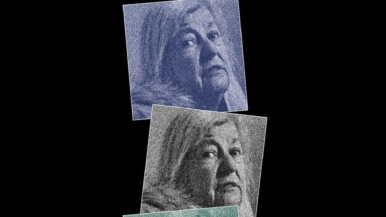Crystal Five
I was sitting in the ROM’s new restaurant, C5, late last week, when the mimolette question arose yet again. Properly aged mimolette is one of my absolute favourite cheeses. A whole one looks like a beaten-up stone cannonball until you prize it open. Inside, the paste is dark orange and so firm that it’s better to dig out fragments with a wedge than try to cut it with a knife. The flavour is bizarrely rich, like aged gouda only much more so—like hazelnuts and caramel and condensed milk and salt—incredibly delicious and with a finish as long and intense as Göttedamarung. I think it would be my desert island cheese. Indeed, I have always imagined this was the cheese that Ben Gunn fantasized about and begged for after his sad marooning. The Mimolette Question, predictably enough, is what wine do you serve with this potent Boule de Lille? The classic answer is a dark, tannic Cahors, but it’s very hard to find any Cahors in Toronto, and Argentinian Malbec (same grape, different hemisphere) is too polite to do the trick. I recently tried some other wines with a hunk of the orange god but they gave up completely and disappeared on the palate—even Ontario Baco Noir and a decent Chilean Cabernet Sauvignon that filled my head like blueberry paint but had no answer for the mimolette. Port? Nah. Islay single malt? I poured a dram of Ardbeg which is as pungently phenolic as any spirit known to man—like drinking iodine—but it and the cheese spoke different languages. Save the Ardbeg for an aged cabrales—now that’s a passionate marriage. I’m told that an old sweet Vouvray can charm mimolette but it, like a good Cahors, is not available on the ROM’s rather expensive but as yet not very extensive wine list. So the cheese and I were left to each other’s company, unwined but otherwise happy.
C5 is a self-consciously architectural space up there at the top of the crystal. The windows look as though they have slid down the soaring walls and hit the floor, coming to rest at odd diagonals. Through them lies an extraordinarily beautiful southward view of the University and the downtown skyline and through them also shines the evening sun, flooding half the tables in dazzling UV. Just for the opening months, I imagine, there are far too many waiters and food runners on the floor, so service matches the attention one gets at a Hong Kong hotel.
C5 chef Teddy Corrado’s food is very modern, meticulous and technically proficient. It’s also delicious. He layers flavours, using one thing to amplify the flavour of another, more primary ingredient—putting a morsel of sea urchin on a scallop, for example, to boost the taste of the sea, or a dot of gummy black nori paste on his tuna sashimi, or a wee slab of seared foie gras to add fat and sweetness to a squab breast cooked sous vide. I ordered the squab and it was gorgeous, the sous vide process leaving the purplish meat as tender as liver but without the liverish taste that pigeon develops when you overcook it. The layer of fragrant yellow fat under the skin hadn’t melted away though Corrado had browned the surface of the meat in a pan at some point, just long enough to give the skin sex appeal. (That’s the only quibble I have with sous vide cooking. As a cooking method it’s the anti-grill, the opposite of barbecue, perfect for people who like their protein pale, moist and tender, but the skin of a bird ends up as soft and anaemic as a latex glove.)
Other treats? I loved the amuse bouche—rich, sweet sea bream sashimi in a yuzu ponzu sauce topped with a tiny leaf of mustard green, a scruple of grated daikon and a curl of pink, dehydrated pickled ginger. I also enjoyed the little mound of quinoa and chopped poblano that accompanied a crab salad—two flavours made for each other. And then there was an awesome compote of cape gooseberries that was one of many garnishes on the cheese plate—as orange in colour, almost, as the mimolette beside it. Which is where we came in…
C5 isn’t perfect but the problems are about design rather than gastronomy. For example, the gorgeous cream-coloured leather banquettes are so low that one sits with the tabletop at around nipple height—no fun at all. The tables themselves are too small to accommodate the many accoutrements and the oversized plates used for some of the dishes. And someone decided to buy that agonizing cutlery with the heavy handles that always slides down into a bowl and will not stay put on the irrationally small, elliptical side plates. I heard butter knives hitting the floor all evening long.
All that said, the restaurant is an asset to the city—more beautiful and sophisticated than it needs to be and with a dedicated and talented young chef at the helm. It has set its sights high—aiming to compete with places like Rain and George and Canoe. I’ll be interested to see how it shapes up in the months to come.
Image credit: Margaret Mulligan





